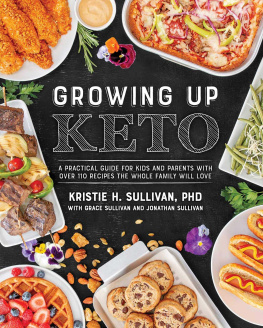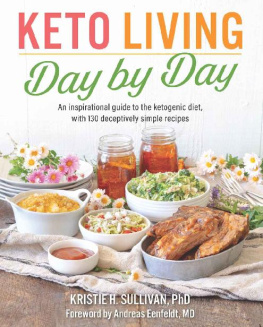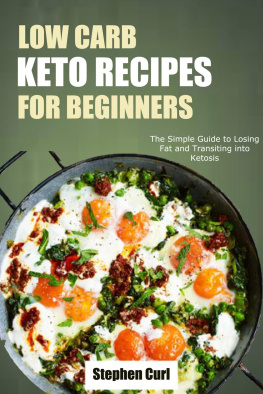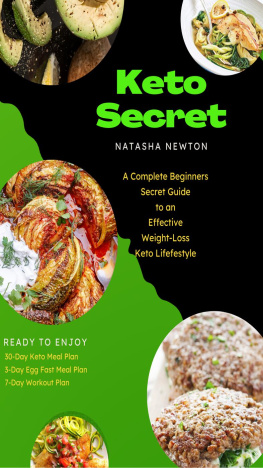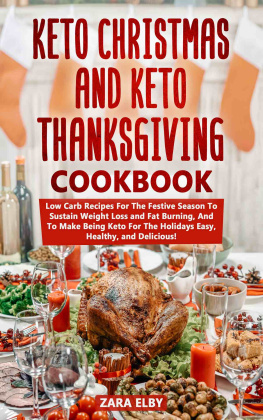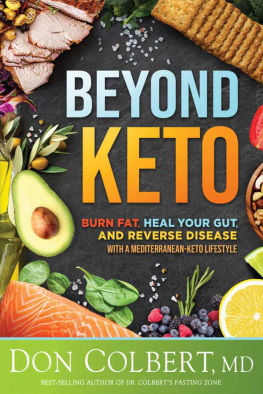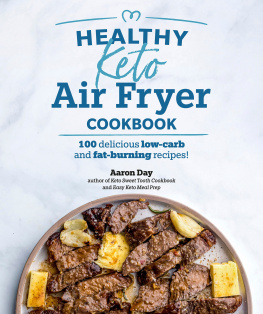THIS BOOK IS DEDICATED TO ALL OF THE CHILDREN GROWING UP BATTLING OBESITY, AND TO THE FAMILIES STRUGGLING ALONG WITH THEM. MAY THIS BOOK HELP YOU UNDERSTAND THAT IT ISNT YOUR FAULT AND THAT FOOD CAN BE BOTH NUTRITIOUS AND DELICIOUS. YOU DONT HAVE TO FEEL DEPRIVED AT THE TABLE OR ON THE PLAYGROUND.
First published in 2021 by Victory Belt Publishing Inc.
Copyright 2021 Kristie H. Sullivan, PhD
All rights reserved
No part of this publication may be reproduced or distributed in any form or by any means, electronic or mechanical, or stored in a database or retrieval system, without prior written permission from the publisher.
ISBN-13: 978-1-628603-96-5
The author is not a licensed practitioner, physician, or medical professional and offers no medical diagnoses, treatments, suggestions, or counseling. The information presented herein has not been evaluated by the U.S. Food and Drug Administration, and it is not intended to diagnose, treat, cure, or prevent any disease. Full medical clearance from a licensed physician should be obtained before beginning or modifying any diet, exercise, or lifestyle program, and physicians should be informed of all nutritional changes.
The author claims no responsibility to any person or entity for any liability, loss, or damage caused or alleged to be caused directly or indirectly as a result of the use, application, or interpretation of the information presented herein.
Cover design by Kat Lannom
Front and back cover food styling by Marcella Capasso
Front and back cover photos by Kat Lannom and Justin-Aaron Velasco
Interior design and illustrations by Yordan Terziev and Boryana Yordanova
Printed in Canada
TC 0121
d_r0
MY STORY
When I was three years old, I began to have an insatiable appetite. Then clothing in stores became too tight for me. My kindergarten classmates called attention to my big belly and big arms. Loudly.
By elementary school, I knew that I ran funny (because folks laughed), that I was easily out of breath, and that I was terrible at sports. My classmates told me so.
One day, the entire fourth grade class watched as two kickball team captains exchanged blows and then wrestled each other into the dirt before being pulled apart by teachers, each of them yelling, No, you take her! and I had her last time and we lost! You take her! They had chosen teammates one by one. Not only was I the last to be chosen, but I was designated the teammate most likely to cause a loss. No one wanted me.
The only times I was chosen for teams were at the field day tug-of-war, where my team made me be the weight at the end of the rope, and when we chose teams for the softball spelling beean inside academic sport where I was the team captain and mine was finally the winning team.
I was lucky to grow up obese in a small town at a time when most kids were polite to my face because they knew their mamas knew my mama and we all knew each others families and preachers. To make fun of another classmate would bring shame upon the one who was rude, so the snickers and name-calling went on mainly behind my back.
As a high school junior, I once found bright yellow cardboard signs taped to the bumper of my car. WIDE LOAD, they said. I had worked late on the school paper that day, so nearly everyone in the school had seen the signs by the time I left campus. During my senior year, the high school quarterback, who was one of the most popular boys in school, of course, wrote in my yearbook that I had more personality than any other girl in the senior class.
Fortunately, I was smart and ambitious. Graduating high school and moving on to college was one of the best things that ever happened to me. While I was teased and called names in college, too, I excelled in my classes, and I found people who were interested in similar academic endeavors. Dating, or not dating, wasnt a big deal like it was in my hometown, where there were only 133 kids in my graduating class and most of the popular kids took turns dating each other.
Professional work environments were better; however, I know that I was overlooked for opportunities because of my appearance. I watched more attractive and less capable women giggle their way into opportunities, often using my ideas and my work to help them succeed.
I suppose Ive spent much of my life being rejected not because of who I was, but because of how I looked, and for what I now understand wasnt my fault.
I was obese because of the incorrect information given to me by doctors, nutritionists, and public health organizations. Had I known, and had my parents known, we most certainly would have restricted carbohydrates early on.

But we didnt know. Instead, we ate low-fat foods, counted calories, and tried to exercise. We could restrict food for only so long, and then we were off our diets and typically gaining weight once again. Those struggles made me stronger in many ways, but they were painful. When I finally learned about keto and why it works, and when I lived through the transformation firsthand, I knew I had to share my experience with others.
I started with my family. My husband, David, who grew up wearing husky pants, trimmed down to his lowest adult weight. His high school ring is forever too big for him. He also lost (and found) his wedding ring twice before conceding to get a new one. Our daughter, Grace, whose story you will read more about in Chapter 1, finally heard encouraging words from her pediatrician about her weight. Like me, she will always struggle with her weight, but unlike me, she isnt a morbidly obese teen and can easily find clothing that fits and looks great on her. Our son, Jonathan, has never known what its like to be obese, but he lost over 30 pounds while growing 3 inches and no longer worries that his thighs are too big. He has more sustained energy, and we rarely encounter a hangry Jonathan now.
As our lives changed, I became sensitive to those I saw all around me facing the same struggles. Adults and children wanted to lose weight. They felt the same pain and shame Id known too well.
Ive described it like finding my way out of a burning building. Once I discovered a route to safety by eating low-carb, I looked back and saw others screaming from the windows. The fresh air that filled my lungs felt so good that I had to run back inside and guide others out. If I could show them the path, then we could crawl out together to safety.
Medical professionals, who should be like firefighters helping to douse the flames, arent always fully on board. There are a few who support ketogenic or low-carb diets, and their numbers are growing, but we need more with hoses of knowledge to help snuff out the damage caused by insulin resistance and metabolic disorders.
Until then, those of us who have escaped can continue offering safety nets and oxygen masks to those still struggling to find their way out of obesity. It is my deepest hope that this book provides the support your family needs to follow a low-carb or keto diet for better health, and that sharing our familys experience might help empower yours.

